Higher classification Malinae | Scientific name Cotoneaster Rank Genus | |
 | ||
Lower classifications Cotoneaster horizontalis, Cotoneaster dammeri, Cotoneaster lucidus, Cotoneaster salicifolius, Cotoneaster franchetii | ||
How to prune cotoneasters instructional video w plant amnesty
Cotoneaster /kəˈtoʊniːˈæstər/ is a genus of flowering plants in the rose family, Rosaceae, native to the Palaearctic region (temperate Asia, Europe, north Africa), with a strong concentration of diversity in the genus in the mountains of southwestern China and the Himalayas. They are related to hawthorns (Crataegus), firethorns (Pyracantha), photinias (Photinia) and rowans (Sorbus).
Contents
- How to prune cotoneasters instructional video w plant amnesty
- Plant of the day coral beauty cotoneaster
- Description
- Wildlife value
- Cultivation and uses
- Nomenclature and classification
- Selected species
- References
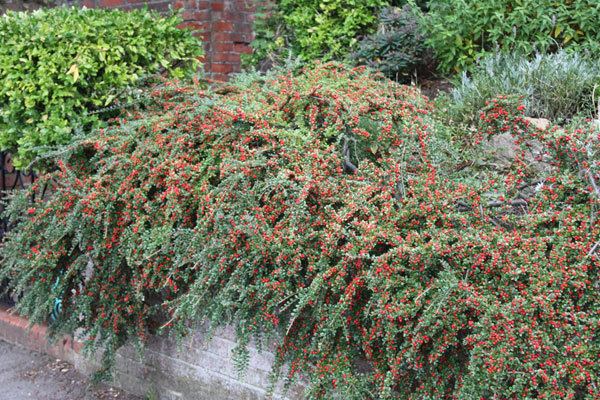
Depending on the species definition used, between 70 and 300 different species of Cotoneaster are described, with many apomictic microspecies treated as species by some authors, but only as varieties by others.
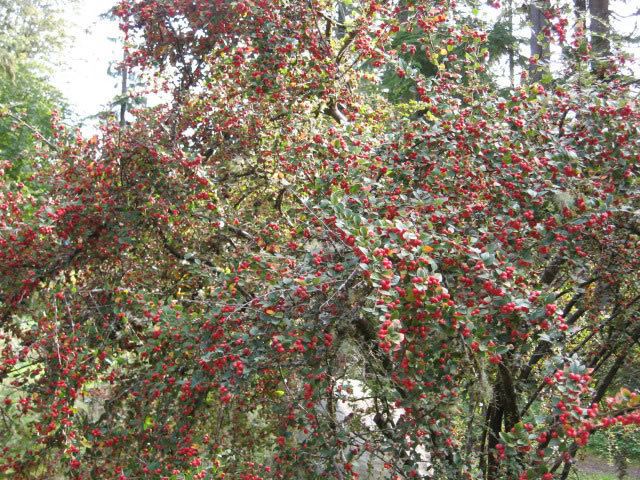
The majority of species are shrubs from 0.5–5 m (1.6–16.4 ft) tall, varying from ground-hugging prostrate plants to erect shrubs; a few, notably C. frigidus, are small trees up to 15 m (49 ft) tall and 75 cm (30 in) trunk diameter. The prostrate species are mostly alpine plants growing at high altitudes (e.g. C. integrifolius, which grows at 3,000–4,000 m (9,800–13,100 ft) in the Himalayas), while the larger species occur in scrub and woodland gaps at lower altitudes.
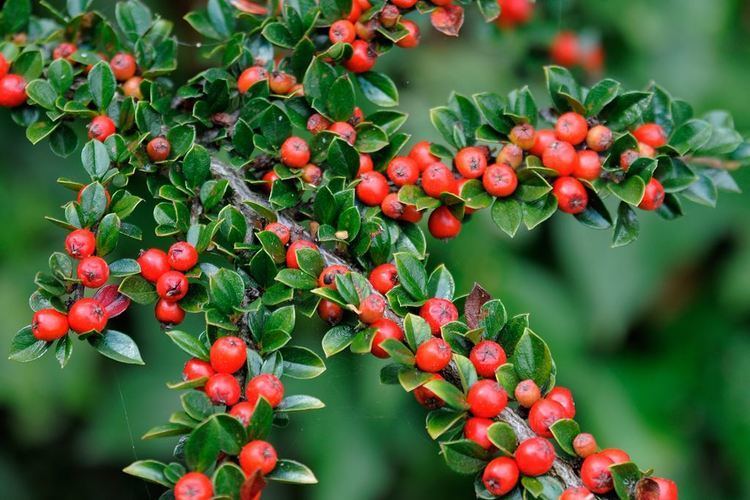
Plant of the day coral beauty cotoneaster
Description
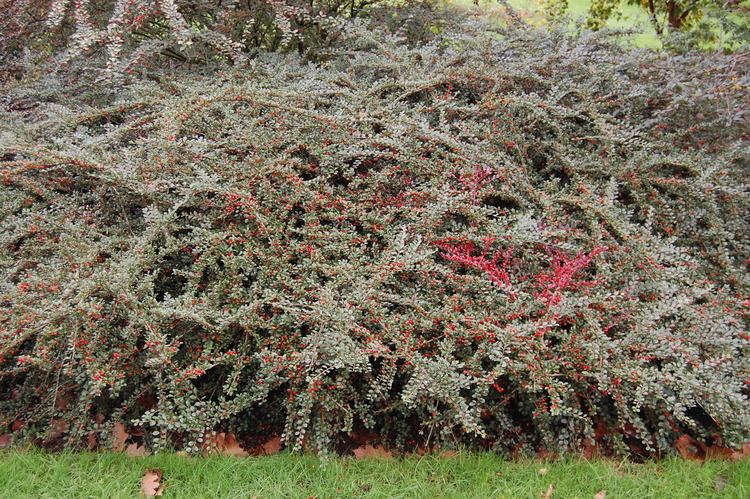
The shoots are dimorphic, with long shoots (10–40 cm (3.9–15.7 in) long) producing structural branch growth, and short shoots (0.5–5 cm (0.20–1.97 in) long) bearing the flowers; this pattern often developing a 'herringbone' form of branching. The leaves are arranged alternately, 0.5–15 cm (0.20–5.91 in) long, ovate to lanceolate in shape, entire; both evergreen and deciduous species occur. The flowers are produced in late spring through early summer, solitary or in corymbs of up to 100 together. The flower is either fully open or has its five petals half open 5–10 mm (0.20–0.39 in) diameter. They may be any shade from white through creamy white to light pink to dark pink to almost red, 10–20 stamens and up to five styles. The fruit is a small pome 5–12 mm (0.20–0.47 in) diameter, pink or bright red, orange or even maroon or black when mature, containing one to three (rarely up to five) seeds. Fruit on some species stays on until the following year.
Wildlife value
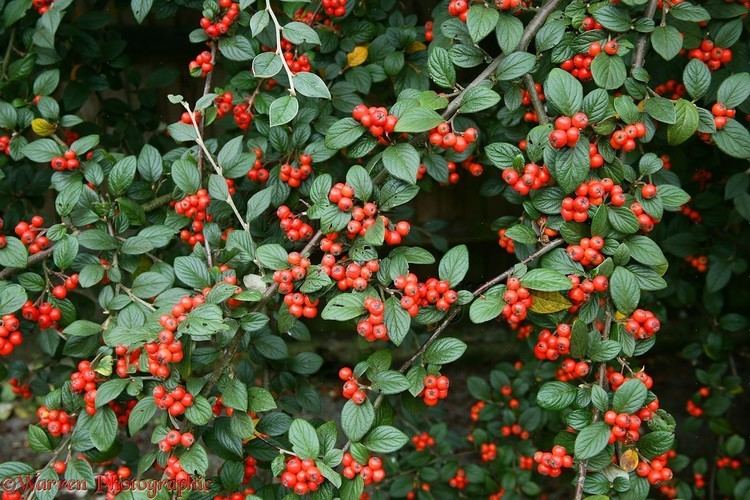
Cotoneaster species are used as larval food plants by some Lepidoptera species including grey dagger, mottled umber, short-cloaked moth, winter moth and hawthorn moth. The flowers attract bees and butterflies and the fruits are eaten by birds.
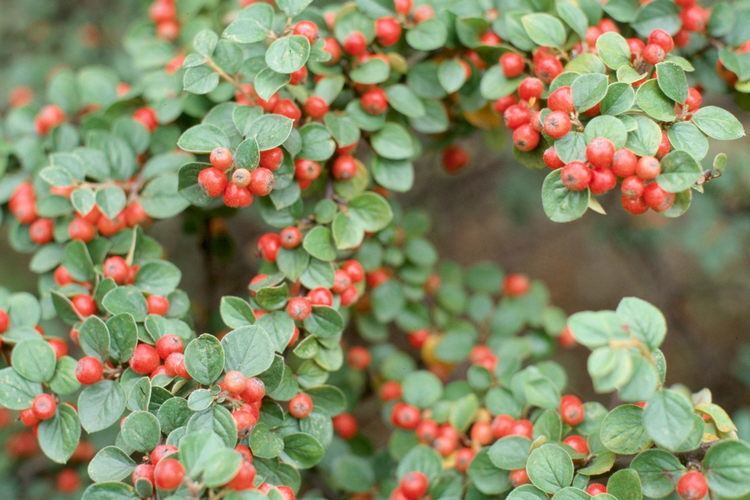
Although relatively few species are native there, in the UK and Ireland, Cotoneaster species are used, along with the related genus Pyracantha, as a valuable source of nectar when often the bees have little other forage in the June gap. The red berries are also highly attractive to blackbirds and other thrushes.
Cultivation and uses
Cotoneasters are very popular garden shrubs, grown for their attractive habit and decorative fruit. Many are cultivars, some of hybrid origin; of these, some are of known parentage, such as the very popular Cotoneaster × watereri Exell (Waterer's Cotoneaster; C. frigidus × C. salicifolius), while others not. Many species have escaped from cultivation and become invasive weeds where climatic conditions are suitable for them, such as the many Chinese species naturalised in northwestern Europe. C. glaucophyllus has become an invasive weed in Australia and California. C. simonsii is listed on the New Zealand National Pest Plant Accord preventing its sale and distribution because of its invasiveness.
The hybrid cultivars 'Rothschildianus' (with cream coloured fruits), and C. × watereri 'John Waterer' (with masses of scarlet berries) have gained the Royal Horticultural Society's Award of Garden Merit.
Nomenclature and classification
The genus name Cotoneaster derives from cotoneum, a Latin name for the quince, and the suffix -aster, 'resembling'. The name is correctly masculine, though in some older works it was wrongly treated as feminine, resulting in different name endings for many of the species (e.g.Cotoneaster integerrima instead of Cotoneaster integerrimus).
The genus is often divided into two or more sections, though the situation is complicated by hybridisation:
Selected species
Sources:
